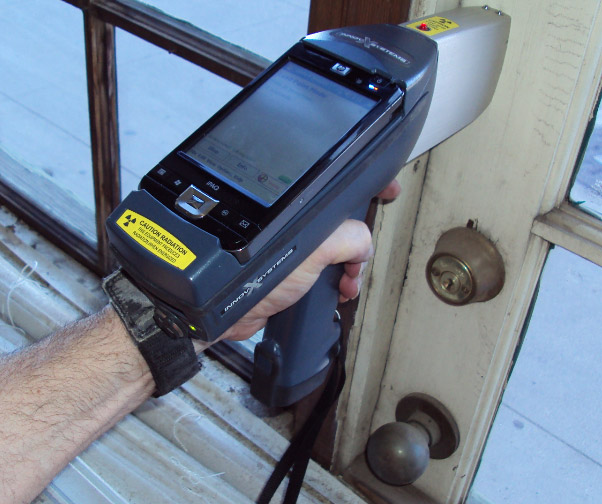Comprehensive Overview on Effective Lead Violation Removal Methods
In the world of environmental safety, resolving lead infractions demands a thorough and structured technique. This extensive guide starts by highlighting the crucial first steps of identifying lead dangers through innovative assessment and screening techniques. The overview clarifies on the importance of sticking to stringent security procedures throughout the removal procedure, including the use of correct PPE and isolating influenced areas.
Recognizing Lead Threats
Determining lead dangers is a critical first step in reducing the dangers associated with lead exposure. Lead, a hazardous steel, can be existing in different ecological tools, consisting of paint, dirt, water, and dirt.
The preliminary phase in determining lead dangers entails recognizing usual lead resources within the constructed setting. Structures developed before 1978 are especially prone because of the common use lead-based paint during that period. In addition, dirt contamination can take place from wearing away outside paint, industrial discharges, or historical use of leaded fuel.
An additional significant source is lead piping and pipes components, which can leach introduce drinking water. Durable goods such as playthings, ceramics, and imported products may also contain harmful lead degrees. Significantly, work environments and hobbies involving lead can track contaminants right into homes.
Analysis and Testing
When addressing lead threats, reliable evaluation and screening are extremely important. This crucial action makes sure the identification and metrology of lead existence, thereby leading subsequent remediation initiatives. First analysis usually involves an aesthetic evaluation to recognize prospective lead resources, such as degrading paint or contaminated dust. This is complemented by even more extensive screening methods to establish the level of contamination.

Dirt clean sampling is another important strategy, particularly in domestic setups. By accumulating examples from floors, windowsills, and other surfaces, this technique supplies understandings right into prospective direct exposure threats. Furthermore, soil testing around building boundaries is important to detect lead contamination that could present hazards, especially to children.
Safe Removal Procedures
Upon finishing thorough analysis and screening, applying secure elimination treatments is the following important stage in dealing with lead risks. This process ensures that lead-contaminated products are properly and securely gotten rid of, decreasing threat to both employees and locals. The initial step entails isolating the affected location utilizing plastic bed linen and correct sealing techniques to stop the spread of lead dirt.
Workers must wear proper personal safety devices (PPE), consisting of respirators, gloves, and disposable coveralls, to minimize direct exposure. Utilizing specialized tools and damp techniques, such as wet fining sand or utilizing HEPA-filtered vacuums, minimizes the dispersion of lead fragments. It is critical to avoid completely dry fining sand or rough blasting, as these techniques can generate unsafe lead dust.
Garbage disposal is one more vital element; all contaminated materials need to be safely nabbed and classified according to EPA and regional regulations. Furthermore, comprehensive cleansing of the work area with HEPA vacuum cleaners and wet cleaning ensures the removal of recurring lead particles.
Post-Removal Confirmation

Verification of successful lead elimination, called post-removal confirmation, is imperative to guarantee the safety and security and habitability of the remediated area. This procedure entails a collection of precise evaluations and tests designed to discover any recurring lead particles that may pose wellness threats. The initial step typically includes a visual inspection to evaluate the completion and top quality of the remediation job. look at these guys This evaluation ensures that all well-known resources of lead have actually been dealt with and click this link that no noticeable indicators of contamination remain.
Following the visual assessment, ecological sampling is conducted. This includes accumulating dirt, dirt, and occasionally water samples from the remediated area. Accredited laboratories analyze these examples to measure lead degrees, guaranteeing they drop below the safety limits developed by regulative bodies such as the Environmental Defense Company (EPA)
Additionally, air quality screening may be carried out to spot airborne lead fragments, particularly in situations where substantial lead-based paint elimination or remodelling has actually taken place. The results of these examinations give quantitative data confirming that the lead levels are within allowable limits.
Inevitably, post-removal confirmation works as a crucial checkpoint, confirming the effectiveness of the lead abatement efforts and safeguarding the wellness of residents and site visitors.
Safety Nets and Upkeep

A key precautionary step includes the usage of lead-safe certified specialists for any restoration, repair, or painting tasks. These professionals are educated in techniques that minimize lead dirt and particles. Additionally, preserving coloured surfaces to prevent damaging or peeling is necessary, as deteriorating paint can release lead particles right into the setting.
Educational initiatives targeting property owners and renters pertaining to the dangers of lead and the significance of reporting any type of possible hazards can even more boost precautionary efforts. Routine cleansing using HEPA vacuum cleaners and wet mopping methods can dramatically reduce lead dust build-up.
Final Thought
In recap, effective lead offense elimination demands a meticulous strategy including comprehensive analysis, exact testing, and rigid removal treatments. Ongoing examinations and maintenance are vital to mitigate future lead threats, thus guarding public health and guaranteeing continual compliance with regulative needs.